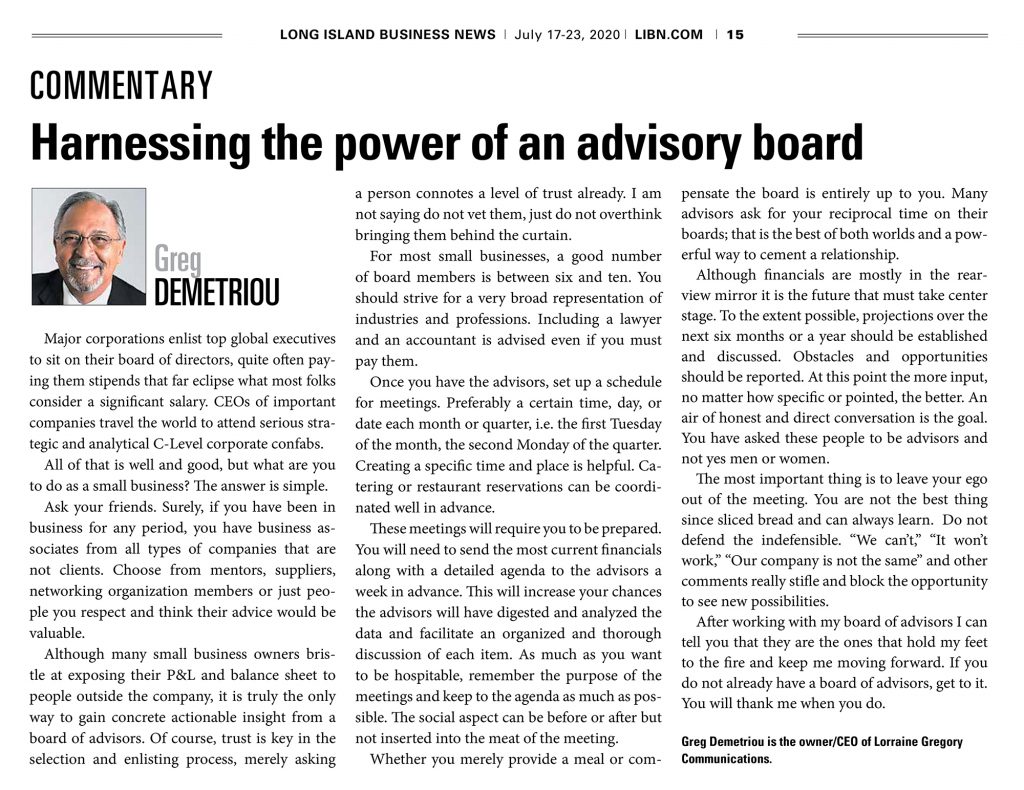 Major corporations enlist top global executives to sit on their board of directors, quite often paying them stipends that far eclipse what most folks consider a significant salary. CEOs of important companies travel the world to attend serious strategic and analytical C-Level corporate confabs.
Major corporations enlist top global executives to sit on their board of directors, quite often paying them stipends that far eclipse what most folks consider a significant salary. CEOs of important companies travel the world to attend serious strategic and analytical C-Level corporate confabs.
All of that is well and good, but what are you to do as a small business? The answer is simple.
Ask your friends. Surely, if you have been in business for any period, you have business associates from all types of companies that are not clients. Choose from mentors, suppliers, networking organization members or just people you respect and think their advice would be valuable.
Although many small business owners bristle at exposing their P&L and balance sheet to people outside the company, it is truly the only way to gain concrete actionable insight from a board of advisors. Of course, trust is key in the selection and enlisting process, merely asking a person connotes a level of trust already. I am not saying do not vet them, just do not overthink bringing them behind the curtain.
For most small businesses, a good number of board members is between six and ten. You should strive for a very broad representation of industries and professions. Including a lawyer and an accountant is advised even if you must pay them.
Once you have the advisors, set up a schedule for meetings. Preferably a certain time, day, or date each month or quarter, i.e. the first Tuesday of the month, the second Monday of the quarter. Creating a specific time and place is helpful. Catering or restaurant reservations can be coordinated well in advance.
These meetings will require you to be prepared. You will need to send the most current financials along with a detailed agenda to the advisors a week in advance. This will increase your chances the advisors will have digested and analyzed the data and facilitate an organized and thorough discussion of each item. As much as you want to be hospitable, remember the purpose of the meetings and keep to the agenda as much as possible. The social aspect can be before or after but not inserted into the meat of the meeting.
